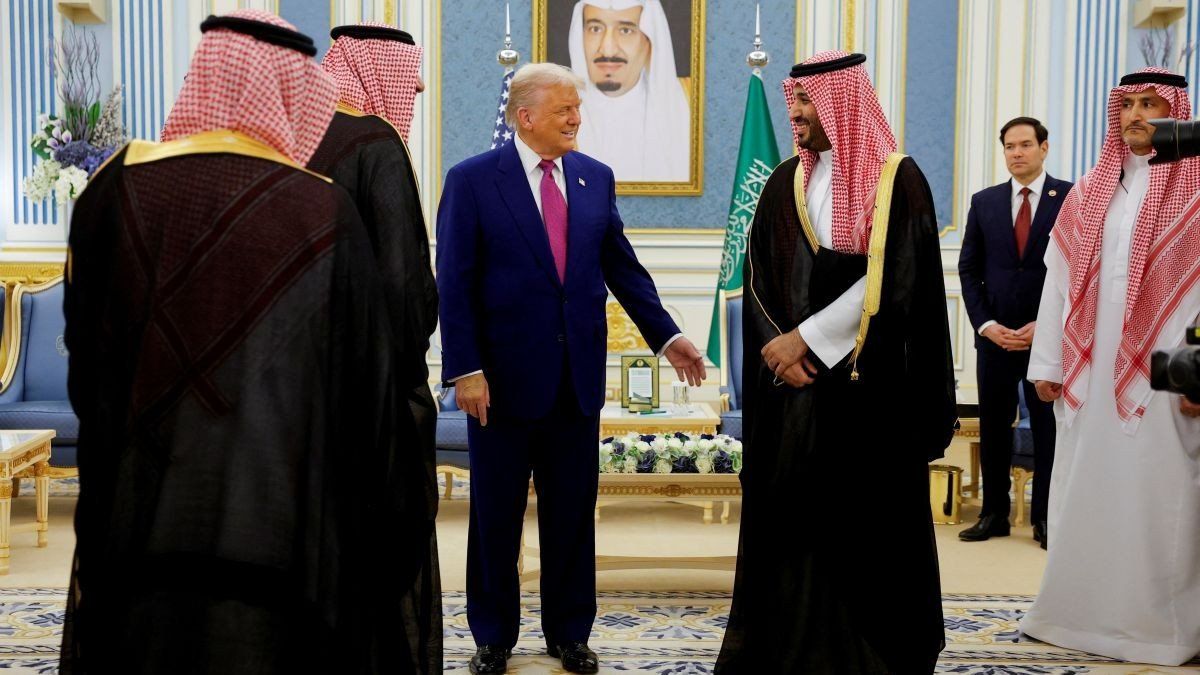In his first diplomatic overseas trip since returning to office, Donald Trump is embarking on a four-day tour through a trio of Gulf states with the goal of bringing home over $1 trillion in deals and investment pledges – and a free $400 million plane for good measure.
The US president will visit Saudi Arabia – his first overseas trip of his debut term was also to Riyadh – as well as Qatar and the United Arab Emirates.
Trump scored an early diplomatic win ahead of his visit when Hamas released Israeli-American hostage Edan Alexander on Monday — a move the paramilitary group framed as a gesture of goodwill toward the president. The release — made without any demands — was aimed at showing the US and Israel that Hamas is serious about pursuing another ceasefire and willing to negotiate, per Jonathan Panikoff, director of the Middle East Security Initiative at the Atlantic Council.
“Hamas clearly believes that the US is the only country — and Trump is probably the only person — with sufficient leverage over Netanyahu to compel him to make a deal,” Panikoff said.
Alexander’s release comes as Israel threatens to escalate its military campaign in Gaza, warning it may move toward full occupation of the strip after Trump’s visit to the region, if no new ceasefire agreement is reached.
White House Press Secretary Karoline Leavitt hinted that the trip would involve peace talks, too, saying that Trump still aims for a “prosperous and successful Middle East” where “extremism is defeated in place of commerce and cultural exchanges.”
But the Gaza War isn’t likely to be high on the agenda for Trump. Despite the Gulf’s support for Palestine, the focus is instead on business.
Saudi Crown Prince Mohammed bin Salman has pledged to invest $600 billion in the US over the next four years, which the Trump administration is trying to push up to $1 trillion. The UAE wants to go a step further, committing $1.4 trillion of investment over the next decade, with the majority of the funds going to AI and energy.
While Qatar has not committed to how much it is planning to invest, they’ve set the tone by readying a $400-million gift to the president in the form of a Boeing 747, raising ethics concerns about the US president accepting such a lavish gift from a foreign government.
The meetings are designed to be symbiotic: Gulf nations are opening their sovereign wealth coffers with the expectation of attracting investment from US tech giants — CEOs including Mark Zuckerberg are among those accompanying Trump on the trip. As these countries push to diversify their economies beyond oil, their decade-long investment promises aim to anchor their economic relevance to the US.
“They want it to be a place where the US thinks of trade with the Gulf countries in the same way that we think of trade with Canada, Germany, or Japan,” says Panikoff.
Hidden figures: Even if these investment pledges reach fruition, the Gulf countries would still have a long way to go until they reach the annual foreign direct investment levels from Japan, Canada, and Germany – the three countries which invest the most in the US. In 2023 alone, Japan ploughed $783.3 billion in the US – mostly in the automobile industry – followed by Canada at $749.6 billion, and Germany at $657.8 billion.
And what about Iran? Like Gaza, this isn’t likely to dominate talks. While Trump’s “maximum pressure” campaign once thrilled Gulf monarchies, they are now more skeptical of US security guarantees and more interested in stabilizing ties with Tehran. If Iran comes up on Trump’s trip, it will be behind closed doors.
“[The Gulf states have] gone largely onto plan B when it comes to Iran,” says Panikoff. “And plan B is détente.”
